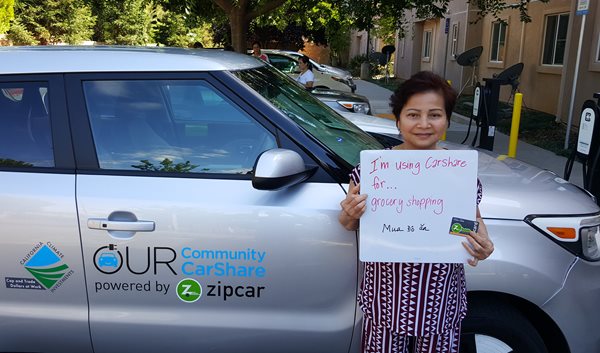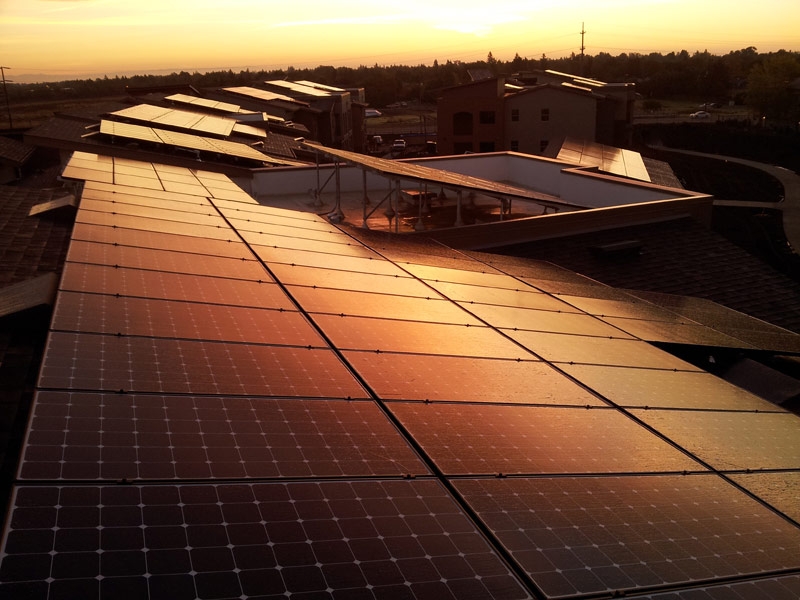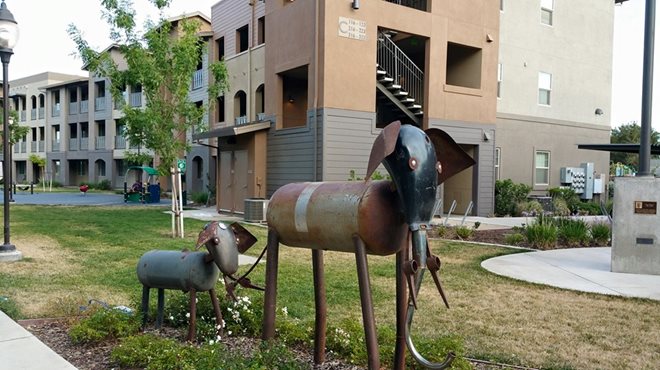Success in community development often is dependent on one word: comprehensive. When tackling an entrenched or systemic challenge, one approach applied one time simply isn’t enough. That’s why when NeighborWorks member Mutual Housing California decided to “bridge the green divide”—allowing lower-income residents to benefit from the state’s leadership in energy-efficient (and thus cost-saving) technologies—it knew it would have to employ multiple tactics.
Electric cars not just for the wealthy
The latest in Mutual Housing’s innovations has attracted a flood of media coverage: access to electric cars, typically seen as faddish, luxury items for the wealthy. However, the savings and climate benefits are well-established, so Mutual Housing stepped up to participate in a pilot when the Sacramento Metropolitan Air Quality District launched the “Our Community Car-Share Program.” The program is financed primarily by a grant of more than $1 million from California cap-and-trade funds, but also by the Housing and Redevelopment Agency, Municipal Utility District, the city itself and Policy in Motion.
“Lower-income residents typically have the most-polluting cars,” notes Anne-Marie Flynn, Mutual Housing’s Community Development Officer. “But they can’t afford hybrid cars, much less electric ones.”
Through the one-year pilot, eight electric vehicles now are available free of charge for trips of up to three hours—ideal for errands such as doctor’s appointments and grocery runs—at one of MHC’s rental properties. Two Kia Soul electric cars and two chargers are available, and the goal is register 40 users in this first pilot. About 20 signed up in the first two weeks.
“There has been a lot of curiosity, but nervousness too,” notes Flynn. “After all, these are brand new cars using an unfamiliar technology. They worry about forgetting to plug the cars back in and running out of charge. But we are offering education in four different languages: English, Spanish, Mandarin and Vietnamese. And the residents who are out there driving really like it.” Mutual Housing also has recruited volunteers who are willing to drive for others.
Resident engagement is key
Mutual Housing is experienced in this kind of behavioral education. In 2011, it started its Green Leaders team, which recruits and trains residents themselves to identify green opportunities and educate fellow tenants. The program started at two properties and now—with the help of NeighborWorks America funding for a VISTA volunteer—has extended to five communities. The Green Teams have developed and implemented activities ranging from composting, to energy auditing, to production of a green-living guide. Team members receive a small, one-time stipend and may choose their projects.Leadership from the top
While the federal government is dialing back its investment in “green,” states like California are maintaining their focus. California has declared a goal of 50 percent renewable energy and a doubling of energy-efficiency savings by 2030, and regulators view low-income, multifamily housing as both a huge opportunity and a challenge. A third of households in California are classified as low-income and 47 percent of these live in multifamily buildings, making this demographic an important target for the state’s energy programs. But at the same time, they often have complicated ownership structures and limited budgets, while dealing with split incentives: Owners and developers are responsible for installing energy-efficient systems, but don’t benefit from reductions in utility bills (which are generally paid by residents). And for low-income housing developers, the challenge of upgrading existing buildings boils down to one problem: the cost.“I have to say, only a handful of us are starting to take major strides in making buildings energy efficient. Most organizations are deterred because of several barriers, and the overarching barrier is a lack of funding,” Vanessa Guerra, Mutual Housing senior project manager, told California Energy Markets for a recent article.
Building to match its principles
Despite these challenges, however, Mutual Housing has been bold.
In March 2015, it completed the 62-unit Mutual Housing at Spring Lake development for area agricultural workers and their families. The development is designed to produce as much energy as it consumes each year, which reduces utility costs and makes housing more affordable. According to the U.S. Department of Energy, the development was the first rental development in the nation to achieve zero-energy certification.
Using public art as reinforcement
Almost everything Mutual Housing does reinforces its green commitment—even its choice of artwork. Sculptor Steve Cook was chosen for his creative use of “found objects.” For example, this pair of statues at New Harmony Mutual represents a mother elephant and baby with gas-tank heads, digging-pick tusks, shovel ears and air compressor-tank bodies. While others see useless junk in rusted objects abandoned in fields, he sees potential art. Cook says he wasn’t thinking of saving the environment when he first began creating his hart, but that has become an important aspect of his work.

“Cook successfully re-uses objects that would go to a landfill otherwise,” says Rachel Iskow, Mutual Housing’s chief executive officer. Today, Cook has sculptures in museums and private homes from California to New York. Iskow, who has been commissioning sculptures since she first saw his work.
That’s called making your values visible.

